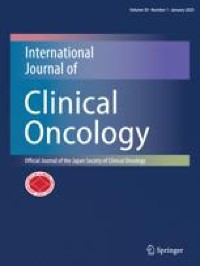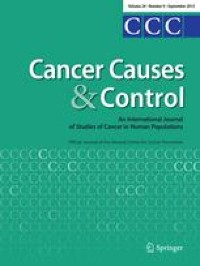Abstract
Background
To investigate the clinical impact of sarcopenia and skeletal muscle density (SMD) among patients with metastatic pancreatic adenocarcinoma who underwent palliative first line gemcitabine-based chemotherapy.
Methods
A total of 330 patients treated with first line gemcitabine-based chemotherapy between January 2010 and March 2017 were included. CT scans before chemotherapy and after 8±2 weeks were evaluated. The L3 skeletal muscle index (SMI) was used to detect sarcopenia and calculated as the total area of the L3 skeletal muscle divided by the height-squared (cm2/m2). SMD was quantified as the mean muscle radiation attenuation of the muscle cross-sectional area across the L3 vertebral body level and was assessed between − 29 and + 150 Hounsfield units.
Results
A SMI to SMD comparison revealed a positive correlation (R2 = 0.058, P < 0.001). Compared with high SMD, the risks of low SMI were 1.516 (95% confidence interval [CI]: 1.164–1.973) among patients with low SMD. Kaplan–Meier analysis showed that the low SMD was related to poor overall survival (OS, median, 6.1 versus [vs.] 7.9 months, P = 0.010). Multivariate analysis using Cox regression showed that low SMI (hazard ratio [HR]: 1.35, 95% CI: 1.03–1.78, P = 0.032) and low SMD (HR: 1.45, 95% CI: 1.09–1.93, P = 0.011) were poor prognostic factors for OS, respectively. Co-presence of low SMI and low SMD had more powerful prognostic implication for OS (HR: 1.58, 95% CI: 1.12–2.23, P = 0.010). Grade 3 or higher toxicity of chemotherapy was more frequently observed in patients who have a low SMI (43% vs. 59%, P = 0.019) and low SMD (44% vs. 60%, P = 0.023). OS was not related to S MD status among patients who were chemotherapy responders (complete or partial responses). However, among non-responders (stable or progressive disease), low SMD groups had significantly poorer OS in comparison with high SMD groups (median, 5.6 vs 7.4 months, P = 0.006).
Conclusions
Sarcopenia and SMD status can be considered a prognostic factor in patients with metastatic pancreatic adenocarcinoma who received palliative first line gemcitabine-based chemotherapy. Severe chemotherapy toxicity occurred in the sarcopenia and low SMD groups. Our data suggest that a comprehensive assessment of skeletal muscle parameters may be more useful prognostic factors.







